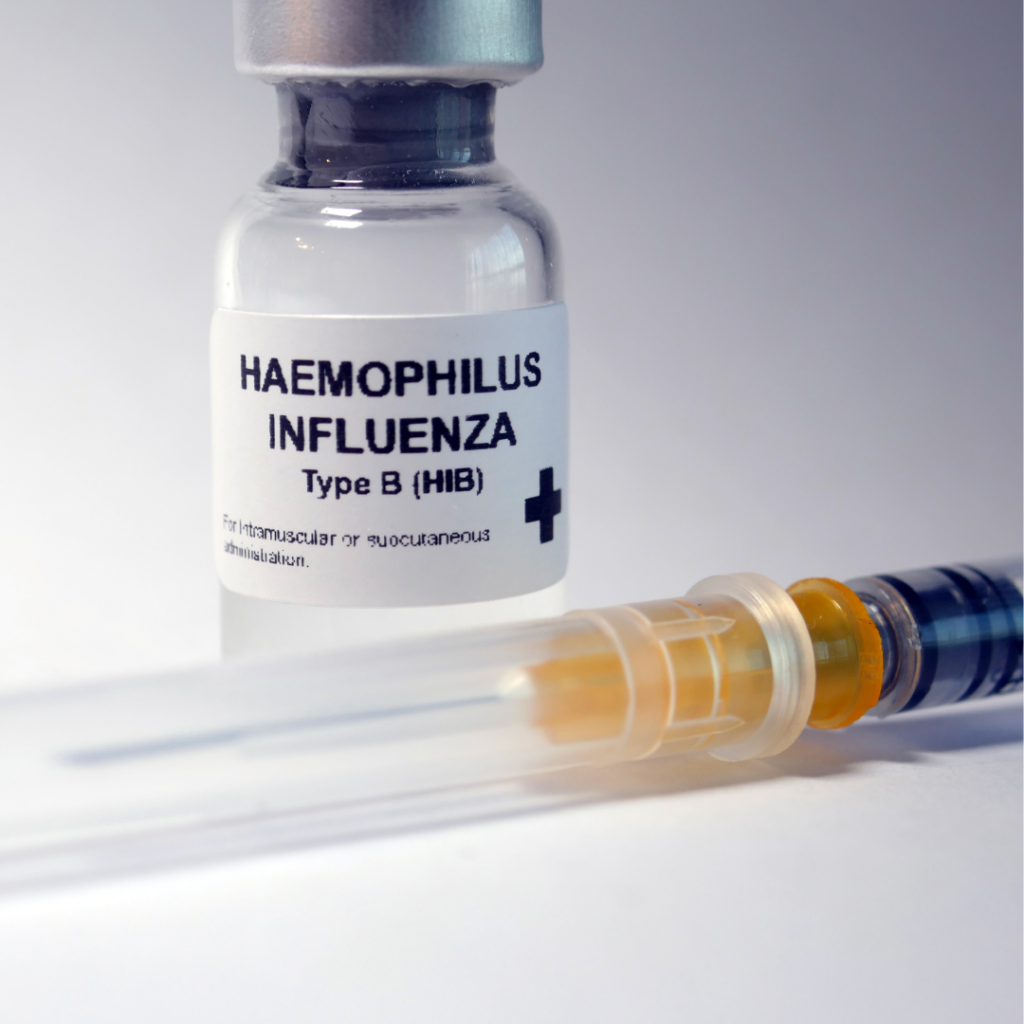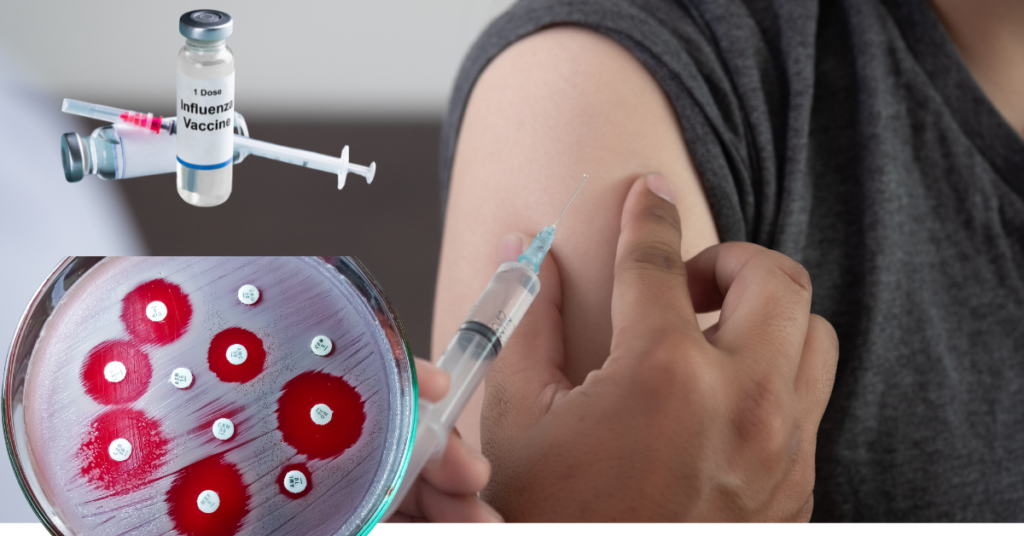Antimicrobial resistance (AMR) is one of the greatest threats to global health today. It occurs when bacteria, viruses, fungi, and parasites change over time and stop responding to medicines, making infections harder to treat. This resistance leads to longer hospital stays, higher medical costs, and increased mortality. According to the World Health Organization (WHO), an estimated 5 million deaths in 2019 were associated with AMR, underscoring the urgent need for new solutions.
One powerful tool that can help reduce the impact of AMR is vaccination. While vaccines are commonly known for their role in preventing diseases, they also play a crucial part in reducing the need for antibiotics and limiting the spread of resistant infections. This blog post, based on the latest WHO Technical Report, “Estimating the impact of vaccines in reducing antimicrobial resistance and antibiotic use, explores how vaccines can contribute to the global fight against AMR and what needs to be done to maximize their impact.
“Historically, the role of vaccines in reducing AMR has not been fully recognized, with the focus primarily on their use for preventing infectious diseases.”- WHO
Source: Estimating the impact of vaccines in reducing antimicrobial resistance and antibiotics, WHO
The Role of Vaccines in Combating AMR
Vaccines work by training the immune system to recognize and fight specific pathogens before they cause illness. This not only prevents infections but also reduces the need for antibiotics. When fewer people get sick, fewer antibiotics are prescribed, which lowers the chances of developing resistant bacteria. In addition, vaccines reduce the spread of infections, preventing resistant strains from passing from person to person.
For example, vaccines against Streptococcus pneumoniae, a common cause of pneumonia, meningitis, and bloodstream infections, have been shown to significantly reduce the use of antibiotics. By preventing these infections, fewer antibiotics are needed, which in turn helps slow the spread of resistant bacteria.
Existing Vaccines and Their Impact on AMR
According to WHO’s 2024 technical report on vaccines and AMR, current vaccines already play a significant role in reducing the burden of AMR. Vaccines that are widely available, such as those for Haemophilus influenzae type b (Hib), Streptococcus pneumoniae, and Salmonella Typhi, have the potential to save up to 106,000 lives each year. These vaccines can also prevent an estimated 9.1 million disability-adjusted life years (DALYs), which measure the overall burden of disease. Beyond health benefits, they can reduce hospital costs by $861 million and productivity losses by $5.9 billion annually.
For instance, achieving higher global coverage of the pneumococcal vaccine in children and the elderly could prevent an additional 27,100 deaths and save hundreds of millions of dollars in healthcare and productivity costs annually.

Vaccines in Development: Hope for the Future
While existing vaccines are already making a difference, the development of new vaccines offers even more potential in the fight against AMR. Vaccines in late-stage clinical trials could prevent an estimated 135,000 deaths and save up to $2.2 billion in productivity losses related to AMR each year. One promising area is tuberculosis (TB) vaccines. TB is a major contributor to AMR, especially in low- and middle-income countries. New vaccines that prevent the progression of latent TB infections into active disease could significantly reduce the use of antibiotics and the development of drug-resistant strains. Such vaccines could save 71,000 lives each year and reduce the need for 1.2 billion defined daily doses of antibiotics used to treat TB.
Economic and Social Benefits of Vaccines
The economic impact of vaccines goes beyond reducing the direct costs of healthcare. By preventing infections, vaccines help reduce the productivity losses associated with illness. For example, vaccines that target pathogens like Klebsiella pneumoniae, which causes severe bloodstream infections, can prevent 27,000 deaths annually, saving $2.5 billion in lost productivity.
In low- and middle-income countries, where the burden of AMR is often highest, the introduction of vaccines could dramatically improve public health and economic stability. The WHO report emphasizes that integrating vaccines into national AMR strategies could help countries better manage healthcare costs while protecting their populations from preventable diseases.
Recommendations for Maximizing the Impact of Vaccines
To fully realize the potential of vaccines in combating AMR, several steps need to be taken:
- Increase vaccine coverage: Expanding the use of existing vaccines, particularly in children and older adults, can significantly reduce the burden of AMR.
- Accelerate vaccine development: Governments, health organizations, and pharmaceutical companies should prioritize the development of new vaccines targeting high-burden diseases like tuberculosis and bacterial infections that contribute to AMR.
- Include AMR in vaccine trials: When developing new vaccines, it’s important to assess their impact on reducing AMR to better understand their full value.
- Raise awareness: Public health campaigns should focus on educating healthcare workers and the public about the role of vaccines in preventing AMR.
The WHO in concluding the short write up on the report noted:
“This report is unique in its comprehensive assessment of 44 vaccines targeting 24 pathogens, encompassing both licensed vaccines and those in development. It incorporates a robust methodology to estimate the potential impact of these vaccines on AMR-related health outcomes, antibiotic use, and economic costs. What sets this report apart is its detailed modelling of the burden averted by vaccines and the feasibility of development for each pathogen. The findings underscore the critical role vaccines must play in national and global AMR mitigation strategies”.
Source: Estimating the impact of vaccines in reducing antimicrobial resistance and antibiotics, WHO
Conclusion
Vaccines are a key weapon in the global fight against antimicrobial resistance. By preventing infections and reducing the need for antibiotics, vaccines help slow the spread of resistant bacteria and save lives. The WHO’s 2024 report highlights the critical role that both existing and new vaccines can play in reducing AMR, emphasizing the need for greater investment, research, and awareness. As the world grapples with the growing threat of AMR, it’s clear that vaccines will be a vital part of the solution.
To protect future generations, we must act now by integrating vaccines into national AMR strategies, accelerating vaccine development, and ensuring that all populations have access to life-saving immunizations.
Check the video below to learn the amazing benefits of taking Measles vaccine.

